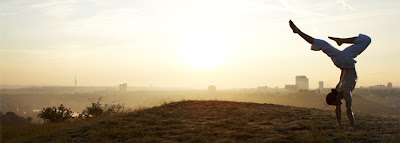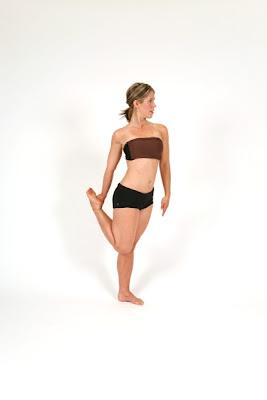So, yesterday I came down with a terrible head cold and after leaving work early I decided to take a break from yoga. I hope tonight I will be able to go back because I can already feel stiffness returning. I'll make my best effort to even just attend and lie down if I can't breathe (nose is stuffed). What a terrible time of year to get sick... It's 32 degrees out and sunny!!
For any of you planning to try Bikram for the first time or are already reaping the benefits, you may have some questions. Essentially, I've taken questions and answers from Bikram Choudhury's website as well as some from my studio's website and placed them here. But, if you have more questions, feel free to leave them here and I can ask a teacher to answer them or give it a shot myself. :)
1. How does Bikram Yoga work?
By the tourniquet effect: stretching, balancing (using gravity), and creating pressure all at the same time. The blood supply in arteries and veins is being cut off, creating pressure. When released, a lock gate effect is created, causing blood to rush through veins and arteries, flushing them out. Also, pressure is applied to the heart by its relative position to the rest of the body.
2. Who should do Bikram Yoga?
Regardless of your fitness level, if you want to improve your health or simply feel good in your body, Bikram Yoga is for you. The series is designed for beginners as well as experienced practitioners so previous knowledge of yoga is not a requirement.
3. Is it a cardiovascular workout and can I lose weight?
You will not only work your heart but also strengthen and nourish your entire cardiovascular system because of the "tourniquet effect" created by the postures. Now matter what your level of fitness is, you will find a Bikram Yoga class very challenging. With persistence, patience, and dedication, you can lose inches, and develop muscle tone and strength that might never come from other forms of exercises.
4. How often should I come to class?
For best results, you should practice at least 3 times a week, optimally 5 times a week, so the different body parts and systems keep the benefits and continue to evolve and correct themselves.
5. What if I cannot stand the heat?
The room is intentionally heated to keep the body from overheating (contrary to popular belief). It warms your muscles, which allows you to work deeper and yet safer. The heat also helps heal and prevent injuries, and it promotes sweating which flushes toxins from your body. In the beginning you may find that the heat, combined with intense exercise, is too much for you. You can always sit through a pose if necessary during class, and then start again. Avoid leaving the room during class so you can become acclimated to the heat. You will get used to it quickly and soon will learn to love it.
6. What if I'm not flexible?
The most common misconception that prevents people from coming to yoga class. Yoga isnot about how flexible you are. It is about stretching your body and spine in all directions. All that matters is that you try the right way, go to your personal "edge", and you will get 100% of the benefits.
7. I feel nauseous and dizzy during class and felt very tired after my first class. Is this normal?
It is not unusual to feel nauseous or dizzy during your first class (and others). Practicing yoga in a heated room reveals to us our present condition, and inspires us to take much better care of ourselves.
Usually the problem is that we do not drink enough water for daily living, let alone for exercising in a heated room. In the heated yoga room, your body needs an adequate fund of water to allow perspiration to release heat from the body. So we estimate that you need 108-140 ounces (3-4 L) of water sometime during to day to allow for 90 minutes in the room.
If you feel disoriented or like you need a good nap after your first few classes, this is likely because your body has begun to cleanse itself. Don't be scared. After the first few classes, this sensation will pass. The more you can relax and give your 110% honest effort during class, the more energized you will feel throughout the class and throughout the rest of your day.
8. Does Bikram Yoga help with balancing the emotions?
Yes. Physiologically, regular practice harmonizes the nervous and endocrine systems. Practicing Bikram Yoga cultivates the mental faculties of faith, self-control, concentration, determination and patience. As we become more aware of our inner life, we notice how events, interactions, and even the atmospheric pressure affect us. When we are aware, we can exercise choice in our response. This helps us balance our emotional life.
Have any more questions??? Leave them in your comment! :)






































